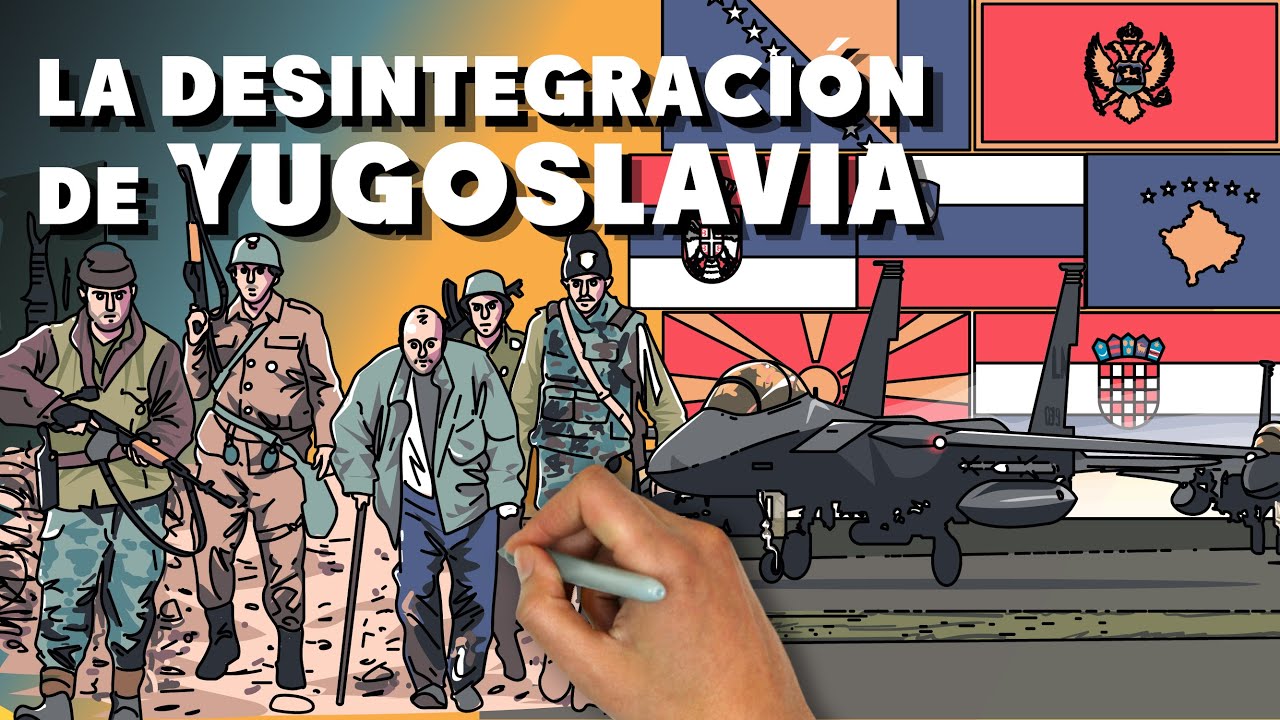Conflict : Yugoslavia
Summary
TLDRIn this video, the creator discusses the complex history of Yugoslavia, from its formation after World War I to its eventual disintegration in the 1990s. The script covers key events such as the Ottoman Empire’s influence, the rise of nationalism, and the leadership of Josip Broz Tito, who managed to hold the country together under socialist principles. The video explores the ethnic and religious tensions that led to conflict, the involvement of Serbia’s Slobodan Milošević, and the impact of the Balkan Wars. The narrative also touches on international interventions and the eventual breakup of the country. The creator encourages further exploration of Yugoslavia’s history through additional resources.
Takeaways
- 😀 The speaker expresses gratitude towards loyal subscribers and viewers, wishing them health and prosperity.
- 😀 The speaker introduces the topic of the video: the history of Yugoslavia, highlighting the complexity of choosing a title for the discussion.
- 😀 An overview of Europe before World War I is provided, including key countries such as Russia, Germany, and the Ottoman Empire, with a focus on the Balkans.
- 😀 Yugoslavia’s formation in 1918 and its complex political history, involving several ethnic groups and regions, is discussed.
- 😀 The dissolution of Yugoslavia in the 1990s is explored, with a focus on the separation of Serbia, Croatia, Slovenia, and other regions.
- 😀 The video touches on the role of the Ottoman Empire in the Balkans and the spread of Islam and Christianity, which contributed to ethnic and religious conflicts.
- 😀 The speaker details the rise of Yugoslavia as a socialist federation post-World War II under Josip Broz Tito, emphasizing the challenges of ethnic and religious unity.
- 😀 Tensions between the West and Yugoslavia during the Cold War are highlighted, with Tito's independent socialist stance and his involvement in the Non-Aligned Movement.
- 😀 The conflicts of the 1990s, including the ethnic war in Bosnia, and the rise of Slobodan Milošević and Serbian nationalism, are discussed as key contributors to the breakup of Yugoslavia.
- 😀 The video concludes with the impact of international interventions, including NATO’s involvement and the signing of the Dayton Agreement, which helped end the conflict in Bosnia.
Q & A
What was the main focus of the video discussed in the script?
-The video focuses on the history and conflict of Yugoslavia, touching on its formation, the impact of World War II, and the eventual breakup in the 1990s.
What were the significant nations and empires in Europe before World War I, as mentioned in the video?
-Before World War I, the significant nations and empires mentioned were Russia, Germany, Austro-Hungary, Romania, Serbia, Greece, Albania, and the Ottoman Empire.
What geographic characteristic made the Ottoman Empire unique in Europe?
-The Ottoman Empire was unique because it controlled territories in both Europe and Asia, separated only by the Bosporus Strait.
How did the Kingdom of Yugoslavia form in 1918?
-Yugoslavia was formed in 1918 as a unification of Serbia, Croatia, and Slovenia, with other regions eventually joining in, under the leadership of King Alexander.
Why did Yugoslavia face internal conflicts, especially regarding ethnic and religious differences?
-Yugoslavia faced internal conflicts due to the diverse ethnic and religious groups within its borders, including tensions between Muslims, Orthodox Christians, and Catholics.
What role did Josip Broz Tito play in the history of Yugoslavia?
-Josip Broz Tito was a key figure in Yugoslavia, leading the country through World War II and establishing a socialist federal state that maintained internal unity despite ethnic differences.
How did Tito's leadership prevent ethnic and religious conflicts in Yugoslavia?
-Tito's leadership managed to prevent ethnic and religious conflicts by promoting a centralized, socialist government and leveraging his charismatic leadership to unite the various groups within the country.
What triggered the breakup of Yugoslavia in the 1990s?
-The breakup of Yugoslavia in the 1990s was triggered by rising nationalism, economic problems, and the death of Tito, which led to increasing tensions between ethnic groups and a push for independence by different republics.
What role did Slobodan Milošević play in the Yugoslav Wars?
-Slobodan Milošević, leader of Serbia, played a central role in the Yugoslav Wars, promoting Serbian nationalism and aiming to create a Greater Serbia, which escalated ethnic conflicts and the breakup of Yugoslavia.
How did the international community respond to the Yugoslav Wars?
-The international community, including the United Nations and NATO, intervened in the Yugoslav Wars by deploying peacekeeping forces, overseeing peace negotiations, and prosecuting war criminals like Slobodan Milošević.
Outlines

This section is available to paid users only. Please upgrade to access this part.
Upgrade NowMindmap

This section is available to paid users only. Please upgrade to access this part.
Upgrade NowKeywords

This section is available to paid users only. Please upgrade to access this part.
Upgrade NowHighlights

This section is available to paid users only. Please upgrade to access this part.
Upgrade NowTranscripts

This section is available to paid users only. Please upgrade to access this part.
Upgrade NowBrowse More Related Video

La desintegración de Yugoslavia

Sejarah Yugoslavia dari Awal Berdiri Sampai Terpecah

Sejarah Pembubaran dan Pecahnya Yugoslavia

Kenapa Negara Besar Bisa Hancur.?? Sejarah dan Fakta Penyebab Runtuhnya Negara Yugoslavia di Eropa

10 Menit Sejarah Singkat Turki Utsmani [Ottoman] - Pendirian lalu Kejayaan hingga Keruntuhan Utsmani

El Imperio austrohúngaro
5.0 / 5 (0 votes)